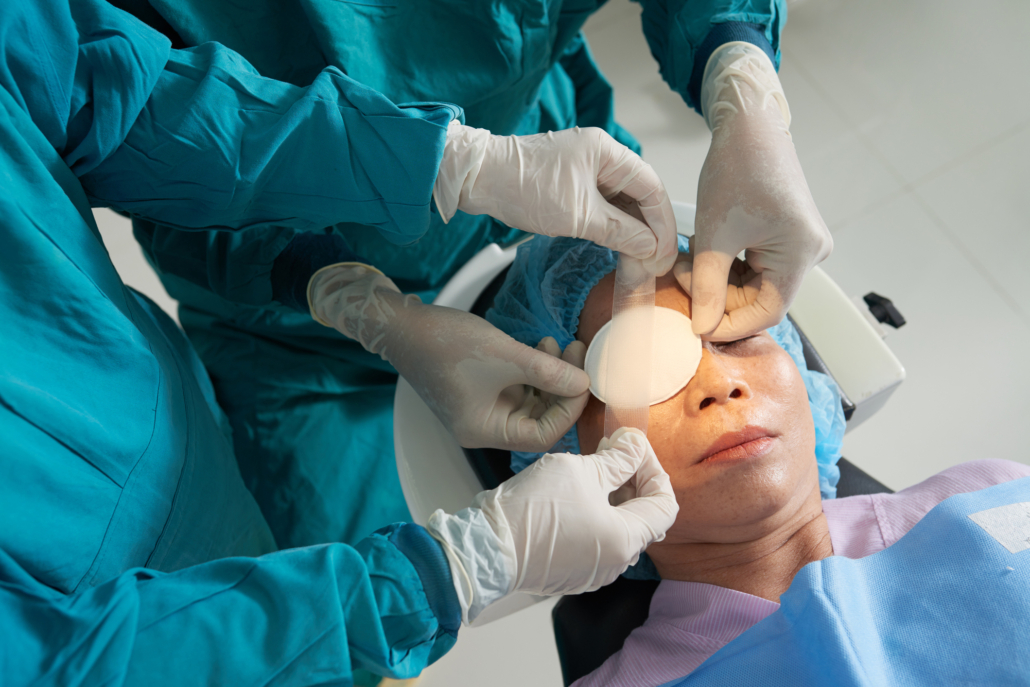Symptoms
- Pain and swelling: Your eye may hurt, especially when you try to open, close or move it. The eye may be sensitive to the touch. Swelling can affect the eyeball, eyelid or entire face.
- Bruising and redness: Any part of the eye may appear red or bruised.
- Vision changes: You may see floating black spots or flashes of light. In addition to eye floaters, you may notice blurry or double vision and other vision problems.
- Problems with eye movement: You may not be able to move your eyes easily. One eye may move independently from the other.
- Changes in eye appearance:The pupils may be different sizes or unusually large or small. One eye may protrude (stick out) from the eye socket more than the other one or look sunken.
- Bleeding: The white part of the eye may look bright red, or you might see small red or black spots in the eye. A red eye can be a sign of an eye injury or several other health conditions.
Causes
- Injury to the globe (eyeball ) .
- Eyelid laceration (cut on the eyelid)- This is commonly caused by the bite of a pet or motor vehicle accident. Depending on the depth and extent of the injury, it may need to be taped, glued or sutured. Inadequate or inappropriate treatment can lead to eyelid function being affected, leaving the eye permanently open or closed or feeling gritty or watery. Sometimes it can leave an unsightly scar on the face.
- Injury to the naso lacrimal duct/ tear drainage system- Any part of the tear drainage system may be involved in the injury. Punctum and canaliculi are commonly affected in chemical injuries and superficial trauma. Lacrimal sac and nasolacrimal duct are usually a part of more complex facial trauma. The symptoms include watering, stickiness or discharge from the eye.
- Orbital fractures- although the orbital rim is quite sturdy, the walls of the orbit are thin and amenable to fracture during trauma to the face. This is commonly seen when someone is boxed in the face with a fist or sports injury with a ball. If there is any suspicion of bone injury, in-depth knowledge of the eyelid anatomy and careful examination helps the Oculoplastic surgeon discuss the options for the best possible outcome.
- Lid Injury- A lid injury may result in not only making the eye look cosmetically unpleasant, any irregularity of the lid margin is also functionally damaging to the eye, as a lid with a defect may fail to cover the cornea fully and provide adequate lubrication. An oculoplastic surgeon repairs the injury in a way to make the lid as close to normal as possible.
Treatment

If you or your child has an eye injury, call for help right away. Treatment depends on the type and severity of the eye injury. Serious injuries may require surgery.
For minor eye injuries, treatment may include:
- Cold compress: Ice packs reduce swelling and relieve pain.
- Eye irrigation: Flush out chemicals and other irritants with clean water for about 15 minutes.
- Eye Drops: Your provider may prescribe eye drops to help your eye heal.
- Eye patch: By covering your eye, you’ll allow it to rest while it’s healing.
FAQs
What is the outlook for people with eye injuries?
The outlook for people with eye injuries varies. Early evaluation by an eye doctor and treatment can significantly improve the prognosis and help avoid permanent vision loss. The outlook depends on several factors, including:
- Amount of time before treatment
- Severity of the injury
- Type of eye injury
When should you see an eye doctor about an eye injury?
Call your doctor right away if you or your child has signs of an eye injury. Untreated, many eye injuries can cause low vision, blindness and other eye problems.
If chemicals or other irritants are in the eye, flush the eye with clean water and call your doctor. If a sharp object is stuck in the eye, don’t try to remove it. Seek care immediately.

